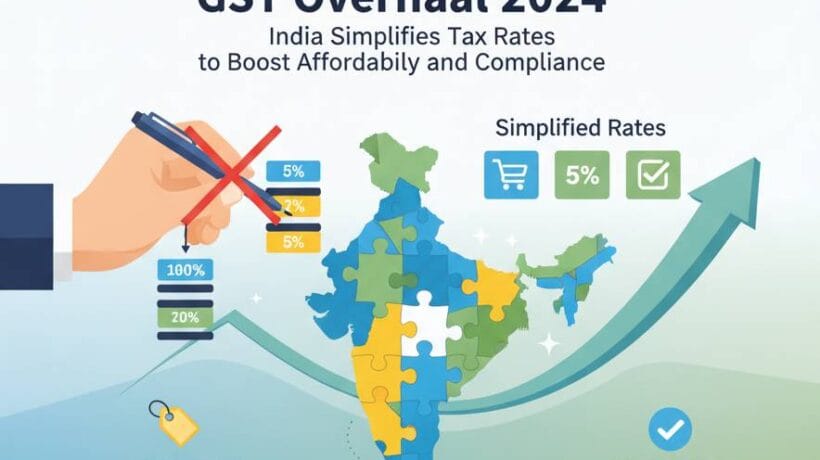GST Overhaul 2024: India Simplifies Tax Rates to Boost Affordability and Compliance
Introduction
In a landmark reform, the Government of India has announced a massive GST overhaul effective September 22, 2024. The new structure reduces the current four-slab system to just two major rates—5% and 18%—along with a 40% rate for luxury goods. This simplification is expected to make compliance easier while making everyday essentials more affordable for consumers.
Key Highlights of the GST Overhaul
Simplified GST Structure
Essentials (including food, medicines, toothpaste, fruits, dairy, shampoo) will now be taxed at 5% instead of the earlier 12–18% range.
Standard goods and services will fall under the 18% bracket.
Luxury goods such as premium cars, high-end electronics, and luxury items will attract a 40% rate.
Impact on Consumers
Products like packaged food, soap, toothpaste, and medicines are set to become more affordable.
Entry-level goods, which were earlier priced higher due to multiple slabs, will now face reduced tax pressure.
Revenue Impact
The government projects a ₹48,000 crore revenue impact, which is lower than earlier estimates.
This indicates that the tax cuts are designed to balance affordability without significantly denting fiscal stability.
Compliance Clarifications
Payments and invoices raised after September 22 will follow the new rates.
For advance payments made earlier, businesses must split transactions between old and new slabs.
The government has released official FAQs and detailed lists to guide taxpayers and businesses.
Industry Reaction
The industry has largely welcomed the move, calling it a step toward ease of doing business.
Experts believe that lower GST rates will stimulate demand, particularly in FMCG, healthcare, and consumer goods sectors.
Broader Economic Implications
Consumer Spending: Lower prices on essentials will boost purchasing power, especially in rural and semi-urban areas.
Market Growth: FMCG, healthcare, and retail may see a surge in demand.
Compliance Simplicity: With fewer slabs, businesses—especially SMEs—will find compliance easier, reducing disputes and confusion.
Global Perception: India’s move to simplify GST enhances its reputation as a business-friendly destination.
Conclusion
The September 2024 GST reform is a historic step toward simplifying taxation in India. While it comes with a projected revenue loss, the benefits of affordability, ease of compliance, and economic stimulus outweigh the short-term challenges. For businesses and consumers alike, this marks the beginning of a more transparent and efficient tax system.
FAQ'S
What are the new GST rates effective September 22, 2024?
India will move to 5% for essentials, 18% for standard goods/services, and 40% for luxury goods.
Which items will become cheaper under the new GST rates?
Everyday items like food, medicines, toothpaste, fruits, dairy, shampoo, and soap will now be taxed at 5%, making them more affordable.
What happens to invoices issued before September 22?
Invoices and payments raised before September 22 will follow the old GST slabs, while new invoices will follow the revised rates.
How will advances be treated under the new GST rules?
If an advance was made before September 22, businesses must split the tax calculation between the old and new slabs.
How much revenue loss is expected from the GST cut?
The government estimates a ₹48,000 crore impact, which is lower than previously expected.
How will this reform affect businesses?
Fewer slabs mean simpler compliance, fewer disputes, and reduced confusion for businesses, especially SMEs.
Will luxury goods become more expensive?
Yes. High-end products like premium cars, electronics, and luxury items will now attract a 40% GST rate.





